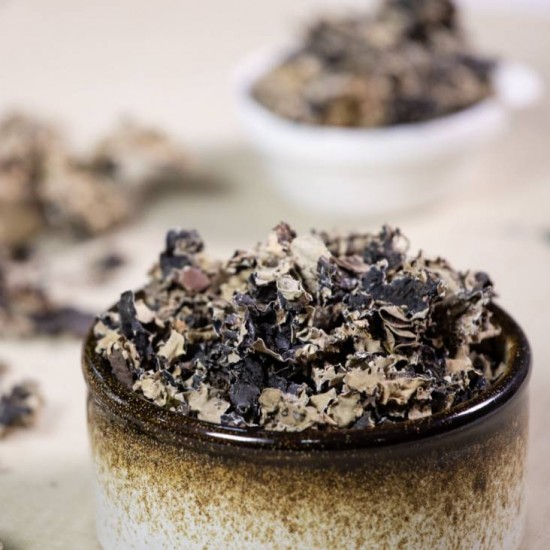
Stone Flower (Parmotrema perlatum), also known as Kalpasi, is an aromatic lichen widely used as a spice in Indian, Sri Lankan, and African cuisines. Unlike most spices, stone flower is not a seed, leaf, or root—it’s a lichen that naturally grows on rocks and tree bark in hilly and forested areas. It has a woody, earthy aroma with subtle smokiness and develops its flavor best when sautéed in oil or ghee.
Stone flower plays an important role in traditional spice blends such as Garam Masala, Goda Masala, Chettinad Masala, and Biryani Masala. It’s valued for its ability to enhance the depth and aroma of gravies, curries, and stews without overpowering other spices. When added to meat or vegetable dishes, it contributes a distinctive umami undertone.
In addition to its culinary use, stone flower is recognized in traditional medicine systems like Ayurveda for its anti-inflammatory, antimicrobial, and digestive properties. It is believed to help with respiratory health, wound healing, and appetite stimulation.
High-quality stone flower is lightweight, fluffy, and intact, with minimal dust or powder. It should have a greyish-brown to black color with natural silvery patches, indicating freshness. The drying process is crucial—properly sun-dried stone flower retains its aroma for a long period and does not develop mold or dampness.
| Quality Indicators | Specifications |
|---|---|
| Botanical Name | Parmotrema perlatum |
| Purity | ≥ 99% whole lichens |
| Moisture Content | Max 12% |
| Color | Greyish-brown with silver patches |
| Aroma & Flavor | Earthy, woody, mildly smoky |
| Form | Whole or lightly crushed |
| Bulk Density | 0.10 – 0.20 g/ml |
| Safety Indicators | Specifications / Limits |
|---|---|
| Salmonella | Absent / 25g |
| Total Plate Count (TVC) | < 10,000 cfu/g |
| E. coli | Not Detected |
| Yeast & Mold Count | < 500 cfu/g |
| Aflatoxins (Total) | < 4 ppb |
| Pesticide Residues | Within EU / Codex MRL limits |
| Foreign Matter | ≤ 0.3% |

We are endowed with a team of highly skilled workers, who carries loads of experience in this field. We strive to attain utmost satisfaction of the esteemed clients, by offering them optimum quality watermelon seeds.
WhatsApp us